
How much time do you spend online? Oh, come on, be honest. I mean all of your time online!
Ross Douthat has a technology-driven hypothesis for why adulthood has become less responsible, less obviously adult. Here is part of what he suggests:
“For the first time in over a century, more 20-somethings live with their parents than in any other arrangement. The marriage rate is way down, and despite a high out-of-wedlock birthrate American fertility just hit an all-time low. More and more prime-age workers are dropping out of the work force— men especially and younger men more so than older men, though female work force participation has dipped as well. This mix of youthful safety and adult immaturity may be a feature of life in a society increasingly shaped by the internet’s virtual realities.”
“It is easy to see how online culture would make adolescent life less dangerous. Pornography to take the edge off teenage sexual appetite. Video games instead of fisticuffs or contact sports as an outlet for hormonal aggression. (Once it was feared that porn and violent media would encourage real-world aggression; instead they seem to be replacing it.) Sexting and selfie-enabled masturbation as a safer alternative to hooking up. Online hangouts instead of keggers in the field. More texting and driving, but less driving — one of the most dangerous teen activities — overall.”
“The question is whether this substitution is habit-forming and soul-shaping, and whether it extends beyond dangerous teen behavior to include things essential to long-term human flourishing — marriage, work, family, all that old-fashioned “meatspace” stuff. That’s certainly the impression left whenever journalists try to figure out why young people aren’t marrying, or dating, or in some cases even seeking sex. An article in the Washington Post put it this way: “Noah Paterson, 18, likes to sit in front of several screens simultaneously … to shut it all down for a date or even a one-night stand seems like a waste.”) The same impression is left by research on younger men dropping out of the work force: Their leisure time is being filled to a large extent by gaming, and happiness studies suggest that they are pretty content with the trade-off.”
Read this article here.

Most writers have well-known authors who they admire. For many of us, it’s someone who writes in the genre we do, whether its science fiction, romance, fantasy, thrillers or any one of a number of genres.
And for many of us, there are paragons of the craft who we all honor and admire – masters of their craft whose work has been read or decades or even centuries because they speak to all of us, regardless of what we do in our day-to-day lives or where our writing interests take us.
Charles Dickens is one of those iconic writers. When Nathan Hill published “The Nix” a critic for Booklist called it an “engrossing, skewering and preternaturally timely tale” and compared it to works by Donna Tartt, Michael Chabon, Tom Wolfe and John Irving. Mr. Irving, in turn, compared “The Nix” to works by Charles Dickens and other 19th-century masters.
But as Alexandra Alter tells us, being compared to Dickens had some unintended consequences.
Read more of this article here.
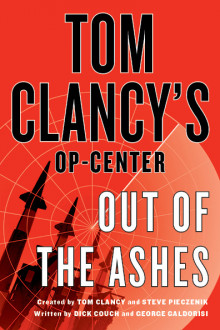
Last month, the entire New York Times Magazine was devoted to one topic – the Middle East. The cover title, Fractured Lands, says it all. The reporting and photography are first rate.
You can read the full magazine here.
Dick Couch and I rolled the dice! When we came up with the high-concept for the first book of the rebooted Tom Clancy Op-Center series in 2011, the United States had committed to a national strategy of rebalancing to the Asia-Pacific region. The plan was to have the Middle East be “yesterday’s news.” We thought differently. We decided to center this new book on the Middle East, because we will be there for the foreseeable future. This is how we opened Tom Clancy’s Op-Center: Out of the Ashes:
“The seeds of today’s East-West conflict were sown when Western nations took it upon themselves to draw national boundaries in the Middle East after the First World War. The infamous Sykes-Picot agreement, which clumsily divided the Middle East into British and French spheres of influence, created weak-sister countries such as Syria, Iraq, and Lebanon, all-but ensuring permanent turmoil. After the Second World War, Pan-Arab nationalism, the establishment of the state of Israel, the Suez crisis, the Lebanese civil war, and the Iranian revolution all drove tensions between East and West even higher. While the competition for oil and oil reserves remained a major stimulus, longstanding Muslim-Christian, East-West issues created a catalyst that never let tensions get too far below the surface. And then came 9/11.”
“The events of September 11, 2001 and the retaliatory invasions that followed redefined and codified this long-running conflict. For the first time in centuries, the East had struck at the West, and delivered a telling blow. Thus, from Afghanistan to Iraq to Yemen to North Africa and into Indonesia, Thailand, the Philippines and beyond, the struggle has now become world-wide, nasty, and unrelenting.”
If you want to read more about how life imitates art, read about our New York Times best-selling Tom Clancy’s Op-Center series, including our just-released Scorched Earth here.
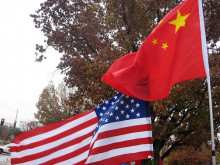
We all want to know what the future holds, both for our personal lives, as well as the broader issue of what the world will be like years hence. For most of us in the latter business, we go to the National Intelligence Council – the NIC. It harnesses the collective wisdom of the Nation’s sixteen intelligence agencies to deep dive into what our future world will look like. This collective wisdom is captured in their report, Global Trends 2030. In a sentence, there is no more comprehensive analysis of future trends available anywhere, at any price.
The beauty – and utility – of this report is that it doesn’t a point solution and state, unequivocally, “the world will look like this.” Instead it offers us four potential scenarios. The last time we visited Global Trends 2030 we looked at the dark Stalled Engines scenario, the most plausible worst-case scenario presented in the National Intelligence Council’s (NIC) comprehensive analysis.
The “bookend” to this scenario, Fusion, represents the most-plausible best-case scenario. The NIC’s companion report to Global Trends 2030 entitled “Le Menu” provides a possible scenario leading to a description of this second alternative world:
“The specter of a spreading conflict in South Asia prompts the U.S. and China to intervene. Washington and Beijing find other issues to collaborate on. Emerging economies grow faster than advanced economies, but GDP growth in advanced economies also accelerates. Technological innovation is critical to the world staying ahead of the rising resource constraints that result from the rapid boost in prosperity.”
Fusion is the most-plausible best-case scenario presented in the GT2030 study and in a sentence is one in which “all boats substantially rise.” However, this all-too-brief description only scratches the surface of this “happy” scenario.
Read the entire article here on the Defense Media Network website and consider what our world may look like in the future – especially if “Fusion” prevails.
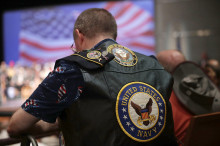
Sunday was the 15th anniversary of September 11, 2001, our century’s day of infamy. This somber day was remembered in a number of appropriate ways, and talked about in the media.
What we should also remember is that these attacks spawned the global war on terrorism – a war we continue to fight a decade-and-a-half later.
By “we” I mean most Americans in spirit, but only a few in fact. Those few, the less-than-one-percent of Americans who serve in uniform-and thousands who have lost their lives since 9/11.
That’s why a recent op-ed by Frank Bruni, “Elites Neglect Veterans” caught my eye. Bruni explains, “the shameful the dearth of ex-military students in elite universities.”
Our veterans who have put their lives on the line for all of us deserve a chance for a seat in elite universities. We have a long way to go, and Bruni presents some sobering, shameful, stats.
You can read the full article here.

Most writers write to communicate and care – often deeply – about how well they do this. One of the most watched aspects of this for most writers is the reviews they get in the run-up to the book’s publication date. These come from major reviewers that receive an ARC – and advanced reader’s copy – of the book.
Want to read an insider’s account about how impactful these reviews are. Jennifer Senior’s recent article in the New York Times is just that. Here is part of what she shared:
“How do professional authors handle unsparing criticism, written in just a few days or weeks, of something they’ve toiled over for years? I decided to ask Curtis Sittefeld author of Prep, American Wife and Eligible (a modern retelling of Pride and Prejudice). In the last three years Curtis has become a friend, and she’s remarkably honest about such matters. She’s also willing to take real risks in her writing — imagining the inner life of Laura Bush, reimagining a beloved classic — which means she’s made herself critically vulnerable in all sorts of ways. Here are edited excerpts from our email exchange.”
This killer-good article is well-worth reading in its entirety: Read the entire article here.
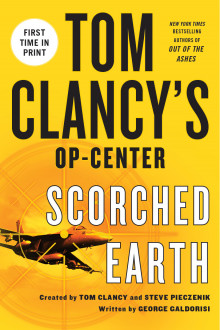
With great reviews and strong advance sales, our next Op-Center book, Tom Clancy’s Op-Center: Scorched Earth is poised to live up to the expectations of our readers. The bar is high, since our first two books of the rebooted Clancy Op-Center series, Tom Clancy’s Op-Center: Out of the Ashes and Tom Clancy’s Op-Center: Into the Fire lived up to our expectations both were on the New York Times, USA Today, and Publisher’s Weekly best-seller lists. Here is what Publisher’s Weekly had to say:
TOM CLANCY’S OP-CENTER: Scorched Earth, George Galdorisi (Griffin): Galdorisi successfully goes solo in the suspenseful third entry in the Tom Clancy’s Op-Center reboot (after 2015’s Into the Fire, with Dick Couch). When the leader of ISIL, Mabab al-Dosari, beheads the American president’s envoy in Iraq, the U.S. launches an air strike that leaves the terrorist’s only son dead. Vowing revenge, al-Dosari recruits a homegrown terrorist cell to kidnap the man who orchestrated the attack, Rear Adm. Jay Bruner. When the FBI bungles Bruner’s retrieval, the National Crisis Management Center—Op-Center’s official name—steps up. Meanwhile, the admiral’s Navy SEAL son, Lt. Dale Bruner, attempts to extract his father on his own and lands in the clutches of ISIL. An Op-Center book is always a master class in military acronyms and hardware, and the ever-expanding cast fights to keep the reader’s attention through the abbreviations. Still, the simple hostage situations keep the tension cranked high and will satisfy Clancy fans old and new.
If you want to see how life imitates art, read more about our New York Times best-selling Tom Clancy’s Op-Center series and our just-released Scorched Earth here:
http://georgegaldorisi.com/blog/books-blog
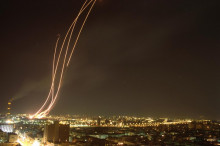
Most national security and military experts agree that the threat of ballistic missiles armed with weapons of mass destruction represents the primary existential threat to the United States. But few realize it is the U.S. Navy that is doing the heavy lifting to protect the homeland and our forces forward from this threat.
The Sept. 11, 2001, attacks on the United States provided a dramatic warning that even the “world’s hegemon,” as America was called by some, was not invulnerable to threats against the homeland. As Americans, their elected officials, and the intelligence and military communities evaluated 21st century threats, the assessment was clear. Absent terrorists operating on American soil, the one existential threat to the nation was the rapidly growing number of states and other actors who already possessed – or were developing – chemical, biological, and nuclear weapons of mass destruction (WMD) and who also possessed, or were developing, ballistic missiles to carry these weapons great distances. In the decade-plus since those 9/11 attacks, rogue nations such as Iran and North Korea have, in fact, developed and in some cases launched ballistic missiles, often designed to intimidate their neighbors.
One of the early – and compelling – calls for a prominent Navy role in dealing with the ballistic missile threat came over a decade ago in a little-noticed report issued by the U.S. National Defense University. Published in their occasional series Defense Horizons, and written by Hans Binnendijk and George Stewart, the report broke important new ground. Provocatively titled Toward Missile Defenses from the Sea, the study’s authors were prescient in envisioning the role Aegis BMD is playing today. Their report noted, in part:
During the past several years, national intelligence estimates have indicated a growing missile threat from North Korea, Iran, and Iraq that will continue to increase throughout this decade… Developments of the past 18 months have created new possibilities for seabasing of national defenses against intercontinental ballistic missiles… Using missile interceptors based at sea to defend the United States against ICBMs offers several advantages, the most important of which are flexibility and control. The most cost-effective option for a potential seaborne deployment is the use of upgraded Aegis radars and modified SM-3 missiles for boost-phase intercepts onboard existing combat ships stationed near the Korean Peninsula and the eastern Mediterranean. In addition to providing a layer of boost-phase defense, ships at these locations would provide radar coverage early in the flight of an ICBM – a valuable asset to the midcourse defense layer.
Read more about the United States journey to provide world-class missile defense in my series of articles on missile defense on the Defense Media Network’s website here.

We’ll all heard that mindfulness medication is all the rage. But where’s the science? Is there any science?
The benefits of mindfulness meditation, increasingly popular in recent years, are supposed to be many: reduced stress and risk for various diseases, improved well-being, a rewired brain. But the experimental bases to support these claims have been few. Supporters of the practice have relied on very small samples of unrepresentative subjects, like isolated Buddhist monks who spend hours meditating every day, or on studies that generally were not randomized and did not include placebo control groups.
Now, a study published in Biological Psychiatry brings scientific thoroughness to mindfulness meditation and for the first time shows that, unlike a placebo, it can change the brains of ordinary people and potentially improve their health.
To meditate mindfully demands ‘‘an open and receptive, nonjudgmental awareness of your present-moment experience,’’ says J. David Creswell, who led the study and is an associate professor of psychology and the director of the Health and Human Performance Laboratory at Carnegie Mellon University.
Read this article here
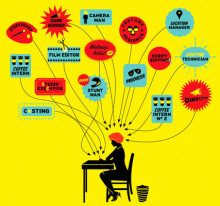
What do actors know about writing? Actually, a great deal! Some time ago, actress Molly Ringwald connected the dots for the rest of us in her article: “Act Like a Writer.” It was an “ah ha” moment for me. Here is part of what she said:
I think there is a natural curiosity that many people have when they hear about an actor writing fiction. While it’s not exactly comparable to proving a mathematical theorem, it does seem an unusual endeavor to some. For me, however, what is surprising is that more actors don’t do it, as writing fiction draws on many of the same skills that, as an actor, I have been practicing my entire life.
The appeal of diving into a character has always been the back story: everything that my character has been through up to the point when the audience first encounters her. I have eagerly invented intricate histories that I shared with no one — except during an occasional late night boozy discussion with other like-minded and obsessive actors.
Ultimately, I believe that the true collaboration involves the audience, or in the case of the novelist, the reader. These are the people who truly make the characters live. When the metaphorical curtain went up on my own book, I sat in the audience, alternately anxious and elated, waiting to see how these actors transformed my words through their own personal experiences.
Read more of this article here:
http://opinionator.blogs.nytimes.com/2012/08/18/act-like-a-writer/











